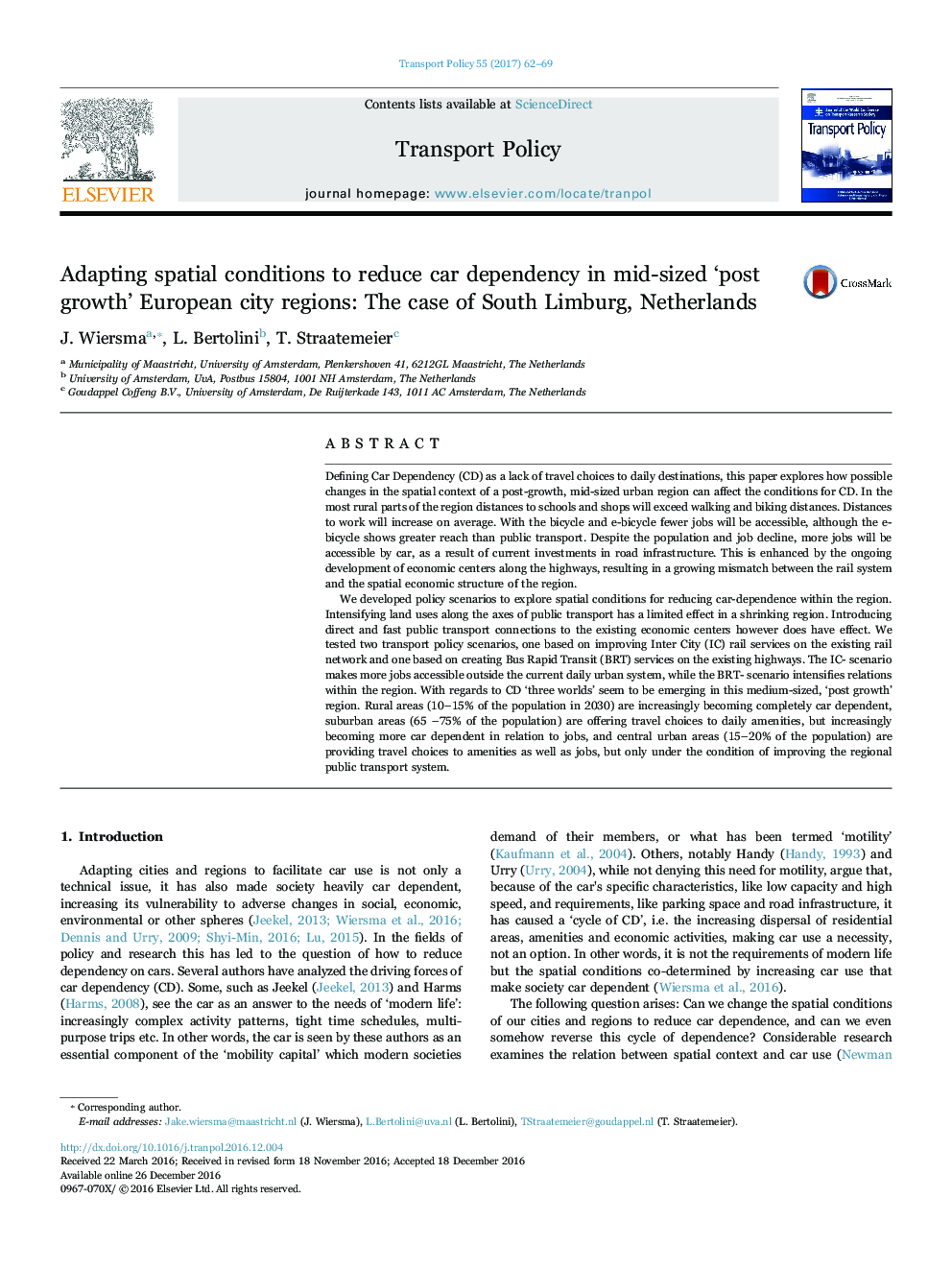| کد مقاله | کد نشریه | سال انتشار | مقاله انگلیسی | نسخه تمام متن |
|---|---|---|---|---|
| 5119209 | 1485822 | 2017 | 8 صفحه PDF | دانلود رایگان |

- We analyzed car dependency in future spatial scenarios of a 'post growth' mid-sized region.
- In the 'Business as usual' scenario residents will on average become more car dependent.
- There is a growing mismatch between the rail-system and the economic structure of the region.
- Transit Oriented Development (TOD) shows only modest impacts.
- Introducing Bus Rapid Transit (BRT) on highways can create car-independent environments in urban areas.
Defining Car Dependency (CD) as a lack of travel choices to daily destinations, this paper explores how possible changes in the spatial context of a post-growth, mid-sized urban region can affect the conditions for CD. In the most rural parts of the region distances to schools and shops will exceed walking and biking distances. Distances to work will increase on average. With the bicycle and e-bicycle fewer jobs will be accessible, although the e-bicycle shows greater reach than public transport. Despite the population and job decline, more jobs will be accessible by car, as a result of current investments in road infrastructure. This is enhanced by the ongoing development of economic centers along the highways, resulting in a growing mismatch between the rail system and the spatial economic structure of the region.We developed policy scenarios to explore spatial conditions for reducing car-dependence within the region. Intensifying land uses along the axes of public transport has a limited effect in a shrinking region. Introducing direct and fast public transport connections to the existing economic centers however does have effect. We tested two transport policy scenarios, one based on improving Inter City (IC) rail services on the existing rail network and one based on creating Bus Rapid Transit (BRT) services on the existing highways. The IC- scenario makes more jobs accessible outside the current daily urban system, while the BRT- scenario intensifies relations within the region. With regards to CD 'three worlds' seem to be emerging in this medium-sized, 'post growth' region. Rural areas (10-15% of the population in 2030) are increasingly becoming completely car dependent, suburban areas (65 -75% of the population) are offering travel choices to daily amenities, but increasingly becoming more car dependent in relation to jobs, and central urban areas (15-20% of the population) are providing travel choices to amenities as well as jobs, but only under the condition of improving the regional public transport system.
Journal: Transport Policy - Volume 55, April 2017, Pages 62-69